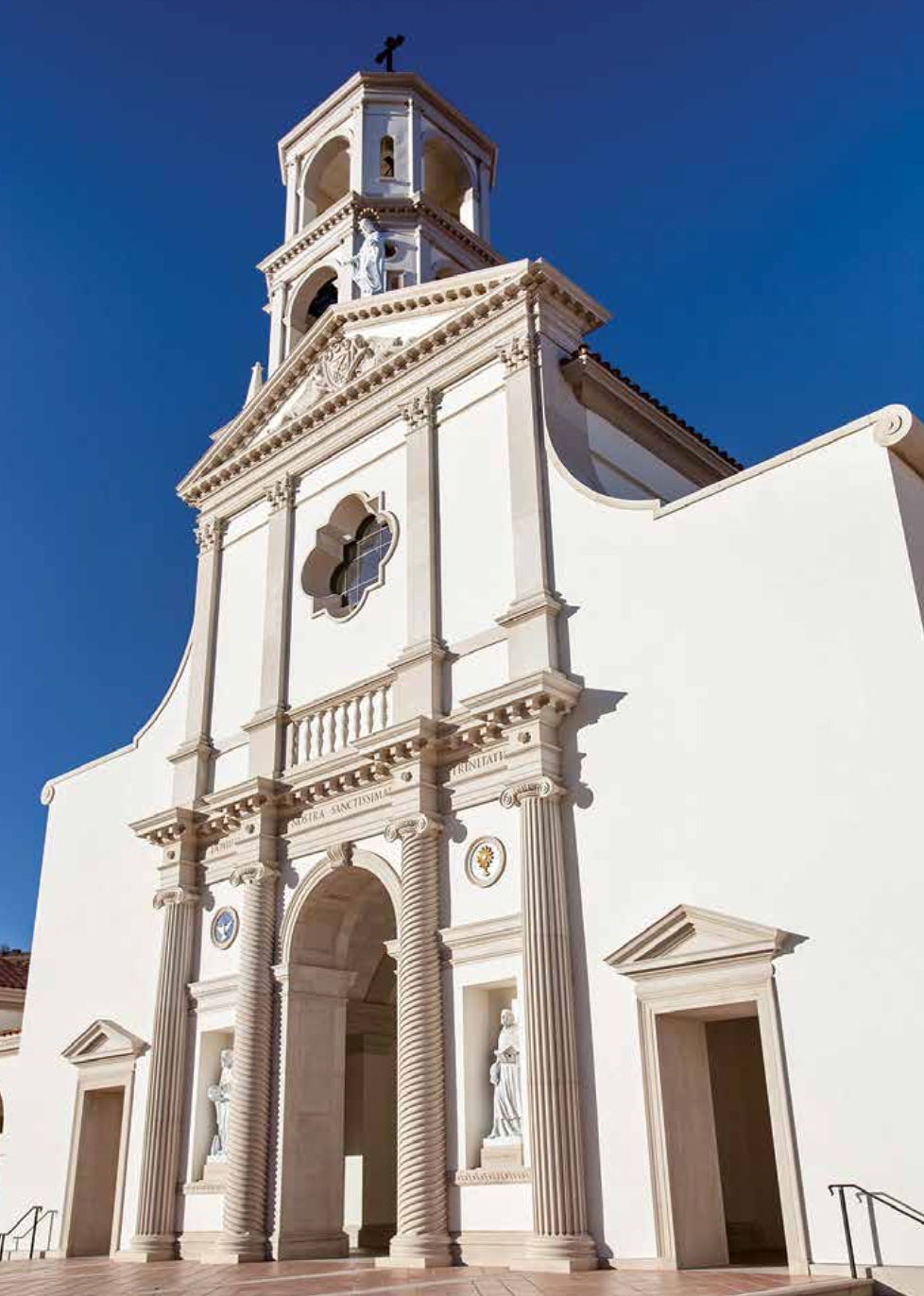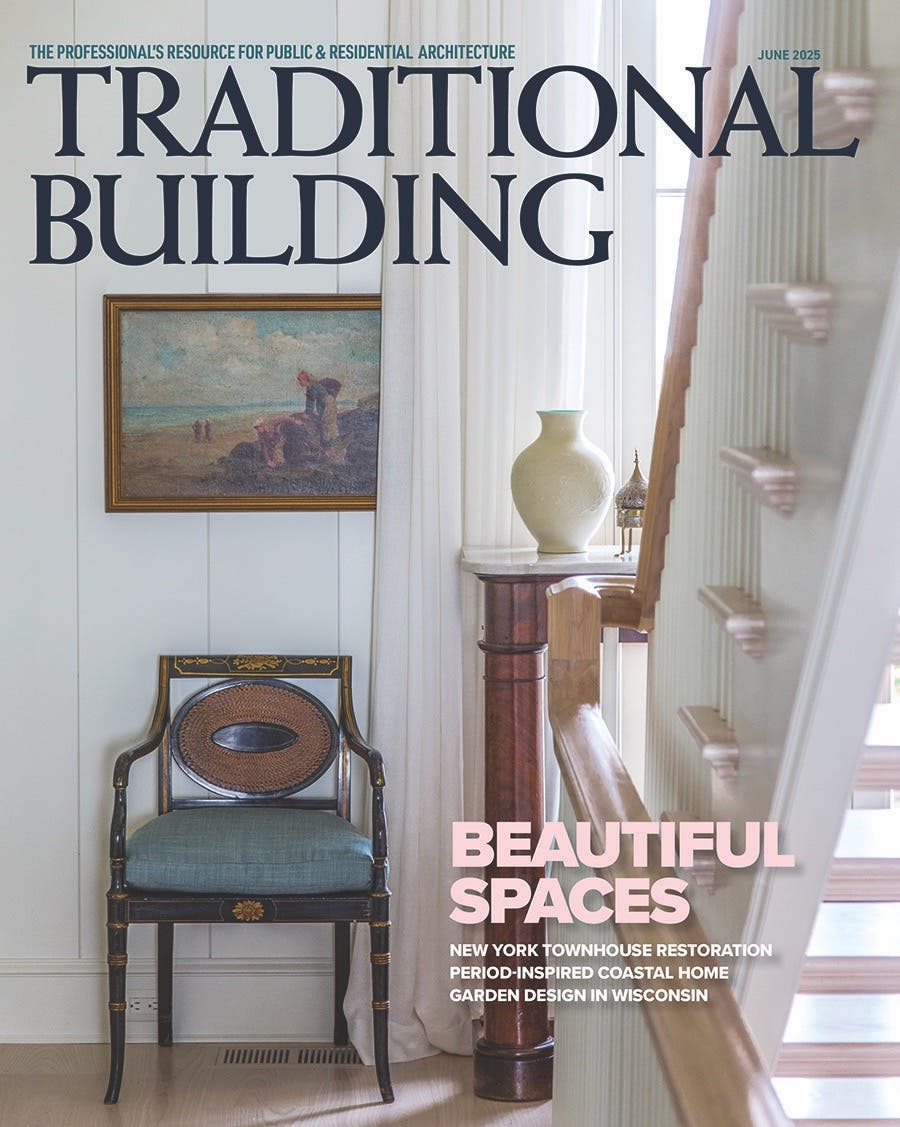
Duncan Stroik: Architecture for the Ages
In the great debate between Traditionalists and Modernists over sacred design, Duncan G. Stroik has steadfastly stood for the beauty and timelessness of Classicism not only as an architect but also as an educator and author. Over the course of a quarter-century, the firm of Duncan G. Stroik Architect in South Bend, IN, has built or renovated 15 traditional-style churches, a process Stroik likens to “writing a sermon in stone and glass that will last.” It is work, he adds, designed to please earthly worshippers and to serve God, “the divine architect,” and “to carry our eyes and then our hearts toward heaven.” Stroik, heralded by Denis R. McNamara, assistant director of the Liturgical Institute of the University of Saint Mary of the Lake/Mundelein Seminary, as “a one-man phenomenon who has changed the landscape of American Catholic church design,” is the recipient of the 2017 Clem Labine Award.
In announcing the award, Clem Labine, founder of Traditional Building, Period Homes and Old House Journal magazines, noted Stroik’s pro bono work to create a more humane and beautiful built environment. “Duncan Stroik exemplifies a life devoted to the pursuit of beauty,” says Labine. “In addition to his professional work, Duncan was singled out for creating and guiding the growth of The Institute for Sacred Architecture, which is dedicated to the renewal of beauty in con- temporary church design. Through the institute’s publication, Sacred Architecture Journal, he has built a global voice that provides theory and practical guidance for the creation of transcendent sacred spaces.” Stroik, the winner of three Palladio awards, started the institute and the journal 20 years ago, shortly after the close of a half-century-long building boom where modernism was the predominant ecclesiastical style.
“We built more churches in the second half of the 20th century than perhaps in any previous period,” he says.“There was a lot of interest in the English-Spanish world in art and architecture but not anything carrying on the discussion in a traditional bent. I see the journal as Traditional Building for churches, and I’d like to think that I’m attempting to do for sacred architecture what Clem Labine did for restoration and Classical architecture.” When Traditional design was considered, he adds, it often was quickly dismissed. “People kept pointing to lack of cash and craftsmen as justifications for building glass boxes,” he says.“I’d like to think that the magazine and my various books and buildings have punctured that balloon.” One need only look at the churches Stroik and his adherents have built as proof of the changing skyline. “There is a renaissance of traditional ecclesiastical architecture today,” Stroik says.“People’s views are starting to catch up with our appreciation for historic structures. And at least with the Roman Catholic Church, it’s hard to find anyone, aside from a few of the religious orders, who want to build in a Modernist style.”
The Traditional style is appealing, he says, because “it’s big and beautiful and logical, and you don’t have to reinvent the wheel.” The classic back-and-forth between Traditional and Modernism brings the St. Nicholas National Shrine at New York City’s World Trade Center to his mind.
It was destroyed on 9/11 when the South Tower fell on it, and when the congregation was ready to rebuild, it invited several select architects, including Stroik’s firm, to submit proposals.The original church, 22 feet wide, 56 feet long and 35 feet tall, was housed in a 1832 building that was dwarfed by the 110-story Twin Towers when they were erected in 1972 and 1973.
Members of the Port Authority of New York & New Jersey carefully considered the merits of Traditional and Modernist designs during the vet- ting process. “It was clear there was a debate among the committee members,” Stroik says. “In the Greek Orthodox faith, traditional art is strong, and certain images have to be in certain places, but there are no strictures on exterior architecture.”
Given the small space, Stroik recommended a square structure with a traditional four-column cross plan.“I showed examples of other Classical churches in Manhattan that were next to skyscrapers and made the argument that a traditional style would make it more visible beside the glass buildings,” he says.
Despite Stroik’s good fight of faith, the committee awarded the commission to Santiago Calatrava, the designer of the World Trade Center Transportation Hub, who created a stunning sculptural structure that bears no trace of tradition.
“In the end, they were more concerned about their image in an elite international world,” he says. “And they picked the starchitect—someone said that when he came into the room, he was like a rock star.” The experience, he says, was enlightening because the committee was open to his ideas.
Stroik, whose award-winning projects include the Shrine of Our Lady of Guadalupe in La Crosse,WI; Our Lady of the Most Holy Trinity Chapel at Thomas Aquinas College in Santa Paula, CA; Saint Joseph Cathedral in Sioux Falls, SD; and Saint Paul the Apostle in Spartanburg, SC, sees church architecture as “building a dream house for 1,000 families.”
The process is, indeed, a family affair that involves not only church leaders and offices of worship, but also congregational building and finance committees and sometimes even liturgical consultants and zoning boards. It is the job of the architect to navigate the competing and sometimes contradictory interests and come up with solutions that work for all. More often than not, style is one of the chief issues most discussed and disagreed upon.
“Some of my clients are very specific about what they want,” he says.“They’ll tell me they want a 19th-century American Gothic Revival church. Sometimes they do know what that means. And sometimes they don’t, so it’s important to have dialogues with them.” It’s a learning process—for architect and client.
One of Stroik’s clients, for instance, was enamored of early Christian basilicas.“ It opened our eyes,” Stroik says. “We did a study on them and on their dimensions and proportions. It’s fun when clients really know things.”
Speaking of knowing things, there are some who think they know more about sacred architecture than Stroik or even God.“This attitude usually comes from young people who have a little knowledge,” he says.
“But these know-it-all clients are a very small percentage.” Most clients, he says, are familiar with his work and are already sold on a Classical style when they meet him. “In my world, which is the Roman Catholic world, most of the bishops who are 60 and under prefer traditional buildings,” he says. “To them, Romanesque sounds like a good compromise between Gothic Revival and Renaissance.” Indeed, some of the bishops and seminary students Stroik encounters have copies of his 2012 book, The Church Building As a Sacred Place: Beauty, Transcendence, and the Eternal, and are subscribers to Sacred Architecture. “These works promote ideas, beauty, and truth,” he says.“They show that you can learn from the past and are meant to serve future pastors and people who are building churches.”
He concedes that there’s more than enough room for Modernism and Tradition to co-exist, albeit in different contexts. “One of my favorite clients, a donor, lives in a Modernist house, which incidentally needs constant major maintenance,” he says. “But when it comes to church work, he likes what we do.”
In his early years, Stroik became captivated by the heavenly architecture of the cathedral.“I grew up in a family that had faith and that tried to do good deeds and serve the community,” he says. “My father was an architect working in the Modernist style who happened to have a penchant for historical buildings, and some of them were churches.”
When Stroik was four, the family moved to London for a year.“Some of my earliest memories of architecture are of churches and cathedrals,” he says. “The ones in France and Venice had a great impact on me.”
Stroik, who has a bachelor’s degree in architecture from the University of Virginia and a master’s in architecture from Yale, honed his skills while working with Allan Greenberg in Washington, D.C. In 1990, he was invited by Thomas Gordon Smith to help launch the Classical architecture program at the University of Notre Dame, where he is a professor of architecture, and in 1994, he set up his own practice in a small out- building on his residential property.
It was while teaching at Notre Dame that he became excited about sacred architecture.“It took me 10 years—seven years of architecture school and three years as an architect—before I designed my first church building,” he says.
The first built project—a private chapel in a home that seats 50—led to Stroik’s big break: The design of the All Saints Church in Walton, KY. Before long, his firm was specializing in sacred architecture, designing not only churches but also parish schools, monasteries, and college chapels. Later, he added liturgical furniture to his design oeuvre.
“In 25 years, I’ve worked on 50 designs, but only 15 have been built because of money or other reasons,” he says, adding that he takes joy in the planning even when the projects don’t come to fruition.“Each time, I start fresh. I don’t recycle. I experiment and innovate because in Classical architecture, tradition is always balanced by innovation.You have to have guts to hire my firm because we push the limits; we’re not doing the average.”
Stroik says sacred architecture transcends mere brick and mortar.“Sacred architecture has meaning and ennobles people, as much as buildings can, and it creates a community and an environment that’s beautiful,” he says.“It should be inspiring to people who believe and to those who do not.”
In his view, church architecture gazes toward heaven, “presenting Christianity in 3-D form: visually, tactilely and sonorously in time.” Churches are meant to be enlightening holy spaces, he emphasizes, not plain-vanilla theaters and assembly halls.
“Sacred architecture is part of our Catholic patrimony in the same way that images of the Annunciation, the Last Supper, and the Crucifixion,” he says.“They are a catechism in paint, mosaic, and stone.”
Stroik revels not only in the design but also in the construction of these houses of worship.“My favorite thing is to see craftsmen carve statues in marble and create woodwork,” he says.“I really want to keep promoting this hand work even though we have machines that can do it.”
That’s why his firm still produces hand drawings. “For a while, when they were first introduced, everyone wanted the computer drawings,” he says. “But now we’re coming to the point where hand drawings are as attractive to clients as hand crafting in church buildings.”
Stroik says it’s important for the church to take a leading role in the design of its buildings because, well, it’s tradition. “For 1,500 years and up until World War II, the Church was considered the finest patron of art and architecture,” he says.
To Stroik, it’s immaterial whether churchgoers—or architects of the future—know his name. “I’d like to leave the world with more beautiful buildings that make people happy and help them pray,” he says. “I want them to say,‘This is a masterpiece, and it reflects the beauty of God.’”



